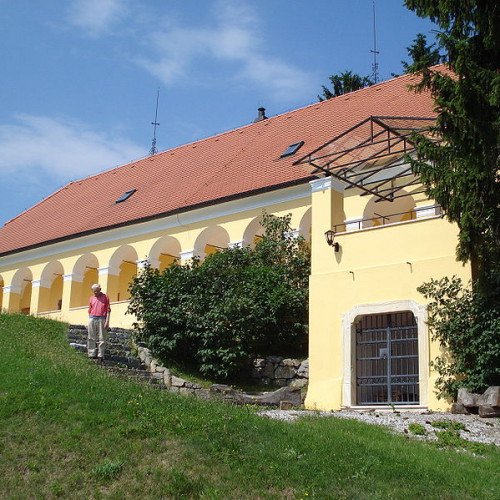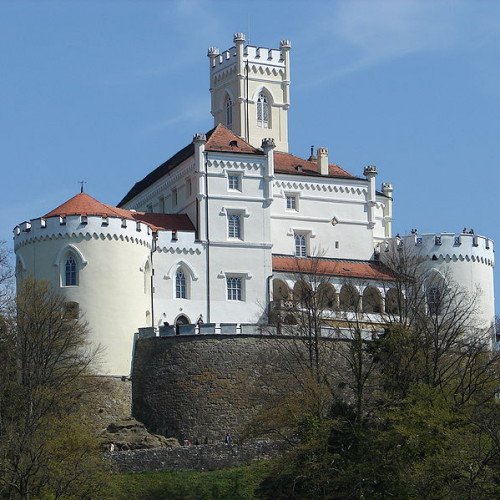Castles of "Croatia" TKALEC MANOR vs TRAKOŠĆAN CASTLE

TKALEC MANOR
Tkalec Manor (Croatian: Dvorac Tkalec or Kurija Tkalec) is a baroque building structure situated next to the village of Štrigova in Međimurje County, northern Croatia. It was built in the mid-18th century and first owned by the members of the Pauline Catholic Order in Štrigova, until their order was abolished by the Croato-Hungarian king Joseph II of Habsburg in 1786. In the 19th century it was owned by the counts of Zichy, who had estates in the neighbouring Slovenian region of Prekmurje as well. Before the national independence of Croatia, it was until 1990 run by local peasant's agricultural cooperative society. After that it was privatized and renewed. The manor itself has a long porch with arcades in the southeastern side. There is a large cellar inside with an old and huge wooden wine press from 1858. It was used for the wine production based on the widespread vineyards on the surrounding hills of that area. Since the manor is located on a high hill (one of the highest peaks in the County), there is a nice view from it to the beautiful landscape of the Upper Međimurje.
Statistics for this Xoptio

TRAKOŠĆAN CASTLE
Trakošćan Castle (pronounced [trakɔʃtɕan], Croatian: Dvor Trakošćan or Dvorac Trakošćan) is a castle located in northern Croatia (in the Varaždin County) that dates back to the 13th century (although the first written mention of the toponym "Trakošćan" is dated to 1334). Trakošćan was built in the 13th century within Croatia's northwestern fortification system, as a rather small observation fortress for monitoring the road from Ptuj to Bednja Valley. According to a legend, Trakošćan was named after another fortification (arx Thacorum) that was alleged to have stood in the same spot back in antiquity. Another source claims that it was named after the knights of Drachenstein who were in control of the region in early Middle Ages. The toponym was first mentioned in written records in 1334. It is not known who its owners were in the first years of its existence. As of the end of the 14th century, it was owned by the Counts of Celje, who were in charge of the entire Zagorje County. The family soon became extinct, and Trakošćan shared the fate of their other burgs and estates that were divided and kept changing owners. In these divisions, Trakošćan was, as a whole, first owned by an army leader by the name of Jan Vitovac, then by Ivaniš Korvin, who gave it to his deputy warden Ivan Gyulay. The family kept the castle throughout three generations, and became extinct in 1566, after which the ownership was taken over by the state. King Maximilian gave the estate to Juraj Drašković (1525–1587) for services rendered, first personally, and then as family heritage. This was how, in 1584, the Drašković family finally came into possession of Trakošćan. In the second half of the 18th century, when the building of manors was flourishing in Hrvatsko Zagorje, Trakošćan was abandoned. Neglected, it fell quickly into dilapidation. It was only towards the middle of the 19th century that the family became interested once again in its estate, in the Romanticist spirit of return to nature and family traditions. In this spirit, the deputy marshal Juraj V. Drašković turned the castle into a residential manor-house, while the surrounding park was turned into Romanticist pleasure grounds. The generations that followed were staying at the castle from time to time all the way until 1944 when they were forced to emigrate to Austria. Soon after that, the castle became nationalized.